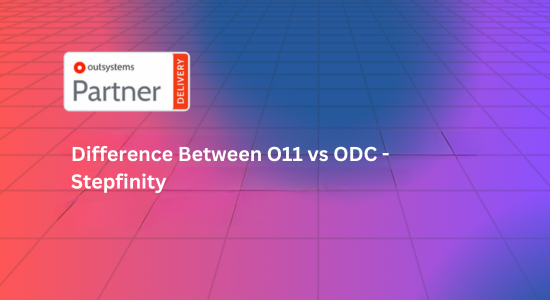In the ever-evolving world of software development, speed, agility, and efficiency are paramount. Businesses are constantly seeking ways to adapt to rapidly changing requirements and bring their digital solutions to market faster. This is where low-code development platforms like OutSystems have emerged as a revolutionary force, redefining the way software is created. In this blog, we’ll explore how OutSystems low-code development is changing the game and why it’s at the forefront of the software development revolution.
Understanding Low-Code Development
Before we delve into OutSystems, it’s important to grasp the concept of low-code development. Low-code is an approach to software development that minimises the need for manual coding by providing a visual development environment. This empowers developers and even non-developers to create applications by using pre-built components, templates, and drag-and-drop interfaces. The low-code approach dramatically accelerates the software development process and democratises app development.
OutSystems: The Pinnacle of Low-Code Development
OutSystems stands out as one of the leading low-code development platforms. It offers a comprehensive environment for designing, building, deploying, and managing web and mobile applications. Here are some of the key ways in which OutSystems is revolutionising software creation:
- Speed to Market: OutSystems enables organisations to develop and deploy applications at unprecedented speeds. The visual development environment, coupled with a wide array of pre-built components, slashes development time, allowing businesses to respond to market demands quickly.
- Democratizing Development: With OutSystems, you don’t need an army of skilled developers to build applications. Even business analysts or citizen developers can create functional and feature-rich apps, freeing up IT teams for more complex tasks.
- Rapid Iteration: OutSystems supports an agile development approach, allowing teams to iterate on their applications continuously. This is critical in today’s fast-paced business environment, where requirements evolve rapidly.
- Seamless Integration: OutSystems excels in integration capabilities. It seamlessly connects with various databases, APIs, and external systems, making it ideal for building applications that interact with other software.
- Scalability: OutSystems is built to scale. Applications created on the platform can grow alongside your business without the need for a complete rewrite. This scalability reduces future development costs and ensures longevity.
- Security and Compliance: The platform has robust security features and adheres to industry standards and best practices. This is crucial for organisations that need to maintain data integrity and protect against security threats.
- User Experience: OutSystems places a strong emphasis on user experience (UX). Developers can easily create responsive, visually appealing applications that meet the expectations of today’s tech-savvy users.
The Real-World Impact of OutSystems
OutSystems isn’t just a theoretical revolution; it’s a transformative force in the real world. Organisations across various industries are benefiting from its capabilities. Here’s how OutSystems is impacting businesses:
- Financial Services: Banks and financial institutions use OutSystems to create customer-facing applications, improve internal processes, and enhance customer experiences while maintaining regulatory compliance.
- Healthcare: OutSystems is helping healthcare organisations streamline patient care, manage electronic health records, and develop telehealth solutions in response to the changing healthcare landscape.
- Retail: Retailers are using OutSystems to build e-commerce platforms, inventory management systems, and customer engagement tools to adapt to the ever-evolving retail landscape.
- Manufacturing: Manufacturers are leveraging OutSystems to optimise production processes, monitor equipment performance, and improve supply chain management.
- Government: Government agencies are using OutSystems to digitise citizen services, streamline administrative processes, and enhance transparency and accountability.
Conclusion
OutSystems is at the forefront of the low-code revolution, redefining how software is created and accelerating digital transformation across industries. With its focus on speed, agility, and ease of use, OutSystems is making it possible for organisations to meet the demands of an increasingly digital world. If you’re seeking a competitive edge in today’s fast-paced business environment, consider embracing OutSystems low-code development. It’s a game-changer that can help your organisation bring innovative software solutions to market faster and more efficiently than ever before, revolutionising the way you create software.








